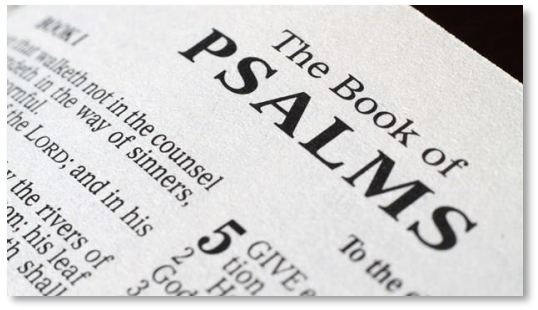The Christian Life: The Psalter as Hymnbook
As the Church sojourns in this age, alive with the light of the Resurrection and the age to come, it sings to God a hymn of praise. Despite the immense amount of hymnography in the services of Vespers and Matins, the backbone of the Church’s hymnbook remains the Psalter.
The Psalter entered the Church’s liturgical life from Judaism. Though there were always non-psalmic compositions sung in the Church (compare St. Paul’s counsel to speak to one another in psalms, hymns, and spiritual songs in Ephesians 5:19), psalms have predominated. The monastics were especially fond of the Psalms and made the sequential chanting of the Psalms their main preoccupation. (Thus St. Augustine’s remark that “love of psalmody gave birth to monasticism”).
When processions were held in the church (such as on “station days,” when the congregation marched in slow procession through the town to the church where the Liturgy was to be held), they sang psalms. (These later were incorporated into the Liturgy as the first three antiphons). Psalms were also chanted in between the various lections in church, so that the long periods of listening to the readings were broken up by the people standing to sing the Psalms. Certain Psalms came to be used as characteristic of certain services, such as Psalm 141 for Vespers (with its verse “Let the lifting up of my hands be as an evening sacrifice), and Psalm 63 for Matins (with its verse “In the early morning (orthros) I meditate upon You”). So reflexive was the use of Psalms that one might also say that hymnody in the church meant psalmody.
So reflexive was the use of Psalms that one might also say that hymnody in the church meant psalmody.
Psalms occupied such an undisputed place in the Church’s hymnbook that when nonpsalmic hymns first came to be used in abundance in the Liturgy, many monks objected to it. For them, the hymns of the Church were unwelcome rivals to the Psalms. But eventually the Church came to accept non-psalmic hymnody, and later, monks such as those in the Studion monastery in Constantinople were in the forefront of their composition.
Current Orthodox liturgical praxis represents a fusion of the cathedral rite used in the cities and the monastic practice used in the deserts. Psalms are still chanted in sequence in the services of Vespers and Matins, but they are incorporated into a structure replete with hymns. The current system calls for the chanting of one kathisma1 each day during Vespers and two kathismas during Matins each day so that the entire Psalter recited in the Divine Office once per week.
The sequential chanting of the Psalter, though a staple of monastic piety, can be easily done by anyone, regardless of whether the monastic system of daily chanting of kathismas is used. One can, for example, chant a Psalm as part of one’s daily prayer rule (though one might want to divide Psalm 119 according to the system of monastic chanting, since it is very long).
The Psalter offers the Christian a comprehensive collection of prayers for all occasions, moods, and situations. It includes prayers of thanksgiving, prayers for help, laments, complaints, as well as a devotional recounting of Israel’s history for the lessons that can be learned from it. The Psalter is rooted in Israel’s historical experience, with Jerusalem as its capital and the surrounding Gentile nations representing a perennial threat. Many Psalms exult in Jerusalem’s glorious destiny as the city protected by God and as the city from which the Messianic king of David will rule over the nations. A devotional Christian usage of the Psalter will therefore demand a transposition of various figures.
For example, the Davidic king reigning from Jerusalem may be understood typologically by Christians as Jesus, the Son of David, ruling from heaven, with the earthly Zion understood as the heavenly city of God (Heb 12:22–24). One’s enemies—whether national or personal—may be understood as one’s spiritual foes, the demons (Eph 6:12). The animal sacrifices may be understood as the Church’s spiritual Eucharistic sacrifice and communion with God. With this transposition of reading from the Old Covenant to the New, a Christian can easily make the Psalter his or her own prayer book, chanting its psalms as prayer to God.
Read more: Psalms (opens in a new tab), Vespers (opens in a new tab), Matins (opens in a new tab), Hours, Compline and Nocturne (opens in a new tab), Monasticism (opens in a new tab)
Footnotes
-
A kathisma (or “session”) is a division of the Psalter arranged for chanting. There are a total of twenty kathismas (or more properly, “kathismata”) in the Psalter, and each kathisma is further divided into three stases or antiphons. ↩